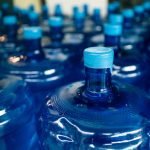As you navigate the bustling streets, with the modern-day armor of a smartphone in one hand and the iconic, condensation-kissed cup in the other, the Starbucks Refresher has become more than just a beverage—it’s a lifestyle. Synonymous with a burst of energy and a flavorful escape, these vibrant concoctions have garnered a cult following among those seeking a thirst-quenching pick-me-up. But amidst the allure of fruit flavors and the effervescence of cool sips, a pivotal question arises: How much caffeine is in a Starbucks Refresher?
In this comprehensive exploration, we delve deep into the caffeinated heart of one of Starbucks’ most enigmatic offerings. With meticulous research and the expertise of industry insiders, we’re here to demystify the caffeine content in these popular drinks, providing you with the essential knowledge to navigate your refreshment choices with confidence.
Contents
- 1 How Much Caffeine Is In A Starbucks Refresher?
- 2 Source of Caffeine in Refreshers
- 3 Customizing Caffeine Content in Refreshers
- 4 Comparative Caffeine Content with Other Beverages
- 5 Consumer Experiences with Starbucks Refreshers
- 6 Nutritional Information for Refreshers
- 7 Starbucks Refreshers at Home
- 8 Caffeine Considerations for Specific Groups
- 9 Conclusion: How Much Caffeine Is In A Starbucks Refresher?
How Much Caffeine Is In A Starbucks Refresher?
A Starbucks Refresher contains approximately 45-55 mg of caffeine in a 16-ounce grande size. The caffeine content varies slightly depending on the size, with a 12-ounce tall having 35-45 mg, a 24-ounce venti containing 70-85 mg, and a 30-ounce trenta having 90-110 mg of caffeine. All flavors of Refreshers, including Strawberry Acai, Mango Dragonfruit, and Pineapple Passionfruit, have the same amount of caffeine regardless of the flavor chosen.
Source of Caffeine in Refreshers

So where does the caffeine in Refreshers come from? Unlike coffee drinks, the caffeine is not from coffee beans. Instead, Starbucks uses crystalline green coffee extract to naturally enhance the beverages with caffeine. Green coffee refers to the raw coffee beans prior to the roasting process. Extracting caffeine from green coffee allows for a clean, concentrated source that provides an energy boost without altering flavor. This helps Refreshers deliver lightly caffeinated refreshment with bright fruit flavors.
Customizing Caffeine Content in Refreshers
See more : How Many White Claws To Get Drunk? Get the Party Right
Some customers enjoy experimenting with ways to increase or decrease caffeine levels in their Refreshers. Here are some modification options and their effects on caffeine content:
- Add extra ice – Lowers caffeine concentration slightly
- Substitute water for lemonade or coconut milk – No impact on caffeine
- Combine with iced tea – Increases caffeine due to tea addition
- Request less pumps of green coffee extract – Lowers caffeine
- Request additional pumps – May increase caffeine slightly
While customizations like extra ice or dairy substitutions do not directly alter caffeine, combining a Refresher with iced tea can bump up the caffeine content. Requests for more or less green coffee extract pumps could also subtly modify levels. However, there are currently no menu options for drastic caffeine adjustments in Refreshers. The standard formulations offer a thoughtfully calibrated amount of gentle stimulation.
Comparative Caffeine Content with Other Beverages
To put things in perspective, here is how the caffeine content in a Tall Starbucks Refresher compares to other popular caffeinated beverages:
-
- Tall Starbucks Refresher: 45mg
- 8 fl oz Red Bull: 80mg
- 8 fl oz Coca-Cola: 25mg
- Grande Starbucks Pike Place Roast: 310mg
As shown, Refreshers generally contain moderate caffeine levels. Beverages known for their strong stimulant effects, like energy drinks and coffee, often have substantially higher caffeine content. But Refreshers offer enough of a lift for an energized treat with real fruit juice.
Consumer Experiences with Starbucks Refreshers

Understanding customer perspectives provides helpful real-world context on the caffeine content in Starbucks Refreshers. Many Starbucks baristas and regulars report that Refreshers offer just the right amount of gentle stimulation. The effects are noticeable without being overpowering. Customers often describe the lift from Refreshers as “mellow” and “not drastic.” People sensitive to caffeine do occasionally notice stronger effects from the drinks. However, most customers find the caffeine levels pleasant and moderate. Overall, consumer experiences align with Starbucks’ intentional approach of formulating Refreshers for subtle caffeination.
Nutritional Information for Refreshers
See more : How Many Calories In Whiskey? Whiskey Calorie Breakdown
In addition to caffeine, Refreshers contain other nutritional elements like calories, sugar, vitamins, and minerals. A Grande Strawberry Acai Refresher has 190 calories and 44g of sugar. The Very Berry Hibiscus Refresher contains 200 calories and 50g of sugar in a Grande size. While not low-calorie drinks, Refreshers offer more nutrients than soda with powerful fruit juice flavors. Customizations like lemonade or coconut milk will alter nutritional values. Overall, calories and sugars tend to fall within expectations for flavorful frozen beverages.
Starbucks Refreshers at Home
With some simple ingredients on hand, customers can recreate delicious Starbucks-inspired Refreshers at home. Blend fresh fruit like strawberries, lime juice, ice, and cold water in a blender. Add green coffee extract for caffeine or omit for a lighter option. Pour into a glass and garnish with fresh fruit slices. Homemade Refreshers allow for fully customizable caffeine levels to meet individual preferences. Get creative with fruit combinations and enjoy soda-free, fruit-powered refreshment.
Caffeine Considerations for Specific Groups
Certain groups like pregnant and breastfeeding women have increased caution around caffeine. The American College of Obstetricians and Gynecologists recommends limiting caffeine intake to 200mg or less per day during pregnancy. A Tall or Grande Starbucks Refresher would fit within this limit. For kids under 18, caffeine intake may stunt growth or interfere with sleep. Most experts advise against caffeinated beverages for children altogether. Knowing the exact caffeine content of Refreshers allows customers to make choices aligned with their individual health needs and restrictions.
Conclusion: How Much Caffeine Is In A Starbucks Refresher?
With their enticing fruit flavors and gentle caffeine kick from green coffee extract, Starbucks Refreshers have become a popular menu addition. Understanding details like the caffeine content and sourcing helps customers make informed choices about these drinks. While containing some natural caffeine, Refreshers offer smooth, moderate stimulation compared to strongly caffeinated coffee and energy drinks. Customers seeking fruit-powered refreshment with a light buzz of energy can feel good about enjoying Starbucks Refreshers. Just keep portions and combinations in mind, and Refreshers can be part of an overall balanced diet

Michael J. Fanola is the chef and owner of Joe’s French Italian Inn Restaurants. He has over 30 years of culinary experience, and his restaurants have been voted “Best Italian Restaurant” by the readers of the Staten Island Advance for many years in a row. Michael is a graduate of the prestigious Culinary Institute of America, and he has worked in some of the most highly acclaimed kitchens in the country.




